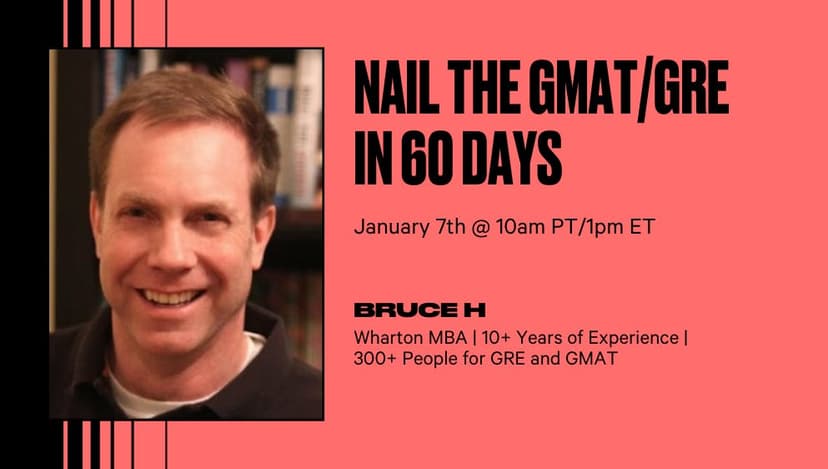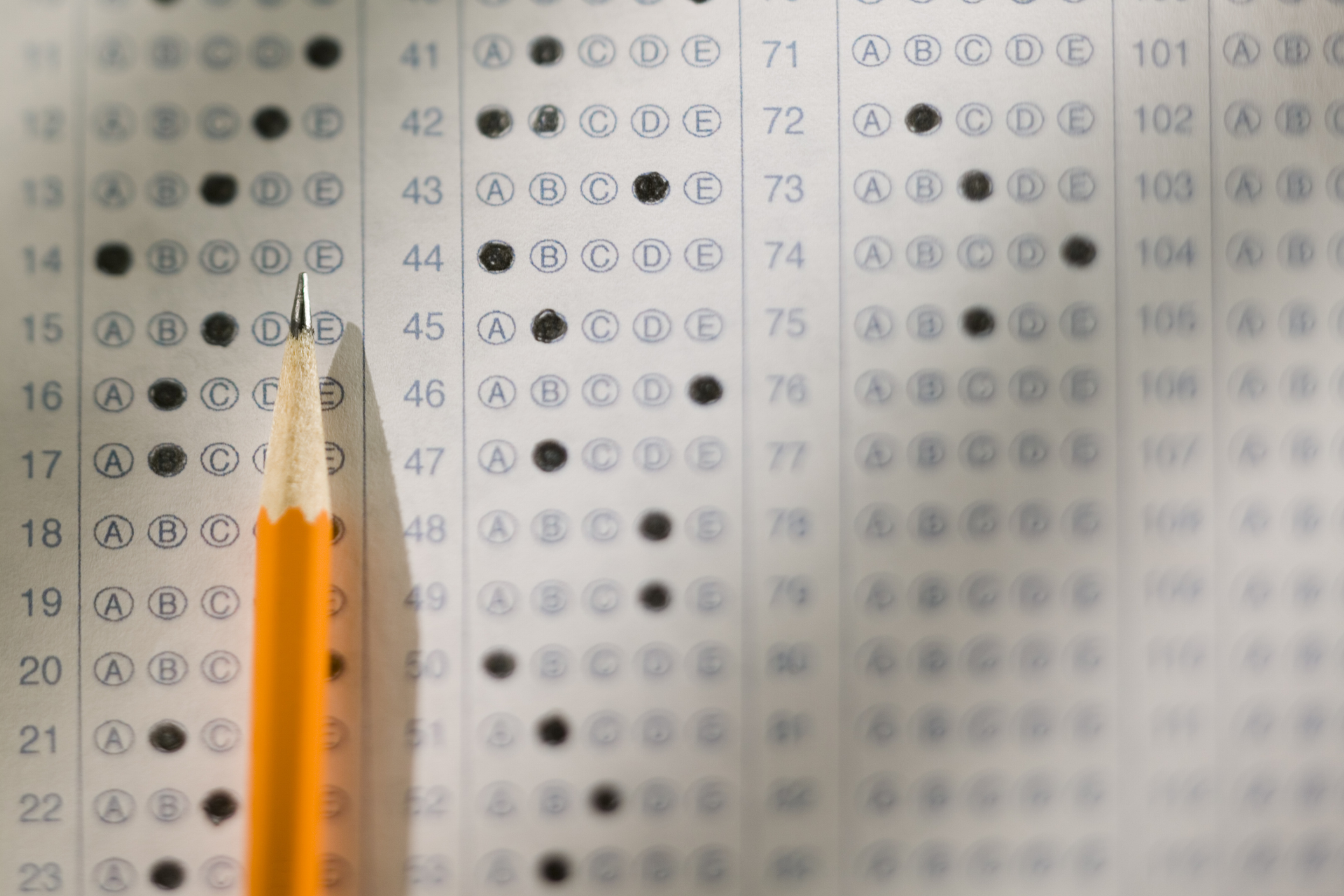
Join a free event
Learn from top coaches and industry experts in live, interactive sessions you can join for free.
Table of Contents
If you want a top GMAT score, you can’t afford to stumble on the GMAT math questions. The Quantitative section is where many students see their dreams made—or broken. Whether you’re facing complex data sufficiency questions or multi-step problem-solving questions, mastering this section requires a clear strategy, proven study materials, and smart use of both free and premium online prep tools.
We’ve combined expert advice, real-world insights from Reddit test takers, and proven online prep resources to create this list of the five best places for GMAT math practice. These sources will help you solve efficiently, avoid errors, and master both math content and strategy so you can perform on test day.
Read: 3 Things You Need to Know About the New GMAT Focus Edition
About the GMAT Quant Section
The GMAT Quantitative section is a computer-adaptive test that adjusts to your performance. It includes two main question types:
| Question Type | Description | Skills Tested |
|---|---|---|
| Problem Solving | Classic math problems require calculation and reasoning. | Arithmetic, algebra, geometry, coordinate geometry, word problems, probability, statistics |
| Data Sufficiency | Choose whether the statements given are sufficient to determine the correct answer. | Logical reasoning, analysis of data, and elimination of unnecessary steps |
Exam Format:
- 31 questions in 62 minutes.
- Scored on a scale that contributes to your overall score (200–800).
- Topics range from percent calculations to distinct integers, from range analysis to line graphs, and even graphical data interpretation.
Read: GMAT Focus Quant: Topics, Timing, Scores, & Tips
The 5 Best Places for GMAT Quant Practice: Trusted by Top Scorers
1. The Official Guide (OG)
Why it’s #1: Every Reddit high scorer calls the OG the “bible” for GMAT math questions—and for good reason. It contains actual retired exam problems, matching the exact question types you’ll face: arithmetic, algebra, geometry, word problems, and data sufficiency. You’ll get exposure to the official format, answer choices, and difficulty progression used by the test creators.
Best for: Authentic data sufficiency questions and problem-solving questions, with clear explanations for each correct answer—ideal for building both accuracy and familiarity with the test.
Expert Tip: Treat the OG as both a practice and review tool. Mark every incorrect answer and note the underlying concepts (e.g., alone is sufficient logic in data sufficiency). Keep a running log of mistakes to track recurring weak areas. This not only boosts skills but also trains you to spot traps in statements quickly.
Visit: mba.com – Official Guide for GMAT Review
2. GMAT Club Question Bank
Why it’s worth it: GMAT Club hosts one of the largest free collections of sample questions in all math topics—coordinate geometry, probability, statistics, graphical data, and more. Its powerful filters let you sort by difficulty, topic, or GMAT problem type, making it easy to focus on your weakest skills. Each problem includes user discussions and expert explanations, providing multiple perspectives on the correct answer.
Best for: Intensive drilling of problem-solving questions and data sufficiency questions at any level, from beginner to 700+.
Expert Tip: Use the timed quiz mode to mimic exam pressure. After each set, conduct a deep analysis of both correct and incorrect answers to enhance comprehension and eliminate recurring errors. This turns every question into a learning opportunity.
Visit: GMAT Club – Quantitative Question Bank
3. Target Test Prep (TTP)
Why experts recommend it: TTP is one of the most comprehensive online prep platforms for GMAT math. It offers chapter-by-chapter mastery in arithmetic, algebra, geometry, percent change, sum/difference problems, logic-based reasoning, and more. Each section includes detailed lessons, hundreds of practice questions, and step-by-step video solutions that explain not just how to solve, but why each method works.
Best for: Building rock-solid math fundamentals before layering in high-difficulty sample questions.
Caution: Reddit users praise TTP’s depth but warn it can be time-consuming. If your exam is less than three months away, use a targeted approach—focus on weak topics and supplement with OG and GMAT Club practice rather than completing the full course.
Visit: Target Test Prep – GMAT Quant Course
4. GMAT Ninja (YouTube)
Why it’s unique: GMAT Ninja provides free video breakdowns of challenging GMAT math questions. The explanations prioritize comprehension over rote memorization, showing you efficient ways to solve problems and eliminate wrong answer choices under exam conditions. Their teaching style is approachable, yet precise—ideal for quickly grasping complex concepts like data sufficiency traps or multi-step problem solving.
Best for: Visual learners, those aiming to improve speed without sacrificing accuracy, and anyone needing a confidence boost before test day.
Expert Tip: Pair videos with OG practice questions. Watch the solution, then attempt a similar question type from your study materials to reinforce the process and build muscle memory.
Visit: GMAT Ninja YouTube Channel
5. Q-51.com
Why it’s challenging: Q-51.com specializes in high-difficulty sample questions aimed at the 700–800 level—ideal for those chasing elite GMAT scores. You’ll encounter gmat problem sets involving maximum/minimum values, half/fifty percent scenarios, equal/distinct integers, probability, data sufficiency, and problem solving with layered reasoning.
Best for: High scorers with solid fundamentals who want to test their ability at full exam difficulty.
Expert Tip: Use Q-51.com late in your prep—after the OG and GMAT Club—so you’re ready for the challenge. Maintain a log of every incorrect answer, note which statements tripped you up, and track whether you misjudged a sufficient/insufficient scenario. This ensures every practice session sharpens high-level decision-making.
Visit: Q-51 GMAT Quant Practice
BONUS: Leland – Personalized GMAT Quant Coaching
Why it’s a game-changer: While other resources give you practice questions and study materials, Leland connects you directly with expert GMAT coaches who’ve scored in the 99th percentile and know the GMAT math section inside out. You get one-on-one guidance, personalized practice plans, and immediate feedback on both problem-solving and data sufficiency performance, something static resources can’t offer.
Best for: Students who want targeted support for GMAT math questions, especially if they’re plateauing, struggling with skills like algebra, geometry, probability, or statistics, or need help mastering alone is sufficient reasoning behind data sufficiency questions.
Leland Resources for GMAT Quant:
- Private GMAT Quant Coaching: Work with a coach to solve high-difficulty GMAT problems and build efficient strategies for each question type.
- GMAT Exam Prep Bootcamp: An intensive, live-training program that covers every major Quant topic—from coordinate geometry and algebra to advanced word problems and high-level data sufficiency questions. Over multiple sessions, you’ll work through timed practice questions, get instant feedback from expert instructors, and participate in targeted review designed to strengthen weak areas and boost your score before test day.
- Free Events & Group Classes: Join Leland’s live group classes and free community events covering GMAT Quant topics like problem solving, data sufficiency, and advanced math strategies. These sessions blend expert instruction with collaborative practice questions, giving you structured learning without the cost of a full course.
- Test Simulation & Feedback: Timed practice tests with detailed analysis of incorrect and correct answers, so you can eliminate recurring errors before your real exam.
Expert Tip: Use Leland early in your prep to build a strong foundation, then again in the final 4–6 weeks for advanced sample questions and exam-day simulation. This two-phase approach helps lock in both speed and accuracy.
How to Master Problem-Solving Questions
These make up roughly half the test and demand a blend of skills:
- Arithmetic: fractions, ratios, percent, half, and fifty percent calculations.
- Algebra: manipulating an equation, solving for unknowns, sum and difference problems.
- Geometry: area, volume, angles, and coordinate geometry.
- Word problems: translating a real-life scenario into a solvable form.
Step-by-Step Process:
- Identify the topic and math concept.
- Translate the words into an equation or diagram.
- Solve methodically—don’t skip steps.
- Eliminate impossible answer choices.
- Double-check the correct answer for errors before moving on.
Example: A GMAT problem might ask for the maximum value of the sum of two distinct integers under certain constraints. Recognizing whether it’s an arithmetic or algebra question immediately saves time.
How to Master Data Sufficiency Questions
Here, your goal is to decide if the statements provide sufficient information to answer the question.
- First, evaluate Statement (1) alone is sufficient.
- Then, check Statement (2) alone is sufficient.
- Combine only if necessary.
Tactical Reminders:
- Avoid assumptions—stick strictly to the data given.
- Watch for traps where one statement looks promising but leaves ambiguity.Point out when both are needed for the correct conclusion.
Example: A question might involve the probability of an event on a given day based on partial statistics. You need to decide whether equal distribution is implied or not.
Read: GMAT Data Sufficiency: Strategy Guide, Question Types, and Pitfalls to Avoid
Common GMAT Exam Mistakes and Expert Fixes
| Mistake | Root Cause | Expert Fix |
|---|---|---|
| Rushing through problem-solving questions | Trying to save time without understanding the logic | Prioritize clarity over speed—fully review each equation and reasoning step |
| Misreading data sufficiency questions | Skipping over what each statement actually says | Underline key details, evaluate alone is sufficient first before combining |
| Not tracking errors | No system for post-practice improvement | Create an analysis log of every missed answer, categorized by math topic |
| Neglecting verbal balance | Focusing only on Quant | Split study time between math and reading comprehension for a stronger composite score |
Read: The 10 Most Common Mistakes in GMAT Exam Prep and How to Avoid Them
Practice Strategy That Works (Expert Playbook)
1) Set targets with a clean baseline
- Take an official-style diagnostic under your test’s timing (match your version’s rules).
- Record: accuracy by topic (algebra, arithmetic, geometry, probability/statistics), by question type (problem solving, data sufficiency), and by time per item.
- Define 2 goals: target score and two weakest concepts to fix first.
2) Drill in focused, timed blocks
- Run 10–12 question sets (mixed difficulty) in PS/DS ratios that mirror your exam; use a timer and answer choices only (no peeking at solutions).
- Apply the 30–60–90 rule per question:
- 30s: parse, identify the concept and variables.
- 60s: commit to a method (backsolving, plugging, or algebraic equation).
- 90s: if still stuck, eliminate to a plausible correct answer, flag, and move on.
- Rotate topics: day A (algebra & word problems), day B (geometry & coordinate geometry), day C (probability/statistics & number properties like distinct integers, percent, half/fifty percent, maximum/minimum, equal).
3) Use a ruthless error log (the “4R” review loop)
For every miss—or lucky hit—capture:
- Re-solve: Do it again without the solution. Prove you can solve it cold.
- Root cause: Misread, shaky concept, bad arithmetic, or DS logic (e.g., tested both statements together before checking “alone is sufficient”).
- Remedy: The micro-skill to train (e.g., factor before expanding; test boundary values; translate ratios into concrete numbers).
- Recur date: Schedule a retake in 48 hours, then 1 week (spaced repetition).
4) Master Data Sufficiency logic (if your exam includes DS)
- Evaluate Statement (1) alone is sufficient → reset → Statement (2) alone is sufficient → combine only if needed.
- Stress-test with edge cases: 0, 1, negatives, non-integers, extremes, and constraints implied by the prompt.
- Label each DS miss by failure type: independence lapse, hidden constraint, algebra slip, or assumption not justified by the data.
5) Tighten your Problem-Solving toolkit
- Have a default plan: translate → model → compute → check.
- Keep 3 fast methods ready: backsolving, smart plugging, and estimation.
- For graphical data/line questions: annotate axes, units, and intervals before computing.
6) Weekly cadence that compounds
- Mon–Thu: two 45–60 min sets/day + 20 min review/analysis (focus on the two weakest concepts).
- Fri: mixed set that interleaves all topics; aim for steady pacing.
- Sat: full simulated test (or Quant section) under strict conditions; log score, average time, and top 3 leaks.
- Sun: deep dive on the week’s error patterns; re-solve every miss; build a mini-sheet of rules & traps.
7) Precision metrics to keep you honest
- Target accuracy in drills: 80–85% for medium sets; 65–75% on the hardest sample questions.
- Time buffer: finish each set with 1–3 minutes spare.
- Retain rate: on re-attempts, hit 90%+ and faster than the first pass.
8) Final 2–3 weeks: exam-specific sharpening
- Short, daily “warm-up” (3–5 questions you’ve mastered) to lock confidence.
- Replace long study with multiple short, timed bursts; preserve test-day stamina.
- Prioritize sufficient/insufficient traps (DS) and common PS snags (rates, ratios, exponents, inequalities).
9) Review like a pro after every set or test
- Study correct answers too—was your method optimal? Could you have used a simpler process?
- Convert every insight into a rule you can state in one sentence (e.g., “For percent change, anchor on original; for ranges, track endpoints, not just midpoints”).
- Update your cheat sheet; re-quiz yourself on it mid-week.
10) Keep the whole game balanced
- Don’t ignore verbal/reading comprehension—a stronger composite score depends on both sections.
- Use free resources first; add targeted premium where gaps persist.
- Above all, train decision-making: choose when to push, when to estimate, and when to guess and protect pacing.
Follow this playbook, and your practice turns into predictable gains: fewer errors, faster decisions, higher score. Exactly what you need for a strong GMAT Quant performance.
Key Takeaways for Mastering GMAT Math Questions
- Prioritize official and high-quality sources like the OG, GMAT Club, and TTP before exploring niche practice banks.
- Blend free and paid practice strategically to cover all question types, from problem solving to data sufficiency questions, and build a complete skill set.
- Track and analyze every error, both incorrect and correct answers, to identify weak concepts and recurring traps in statements or calculations.
- Simulate exam conditions regularly to build pacing, stamina, and confidence with multiple questions in a row.
- Target your weakest areas first (e.g., algebra, coordinate geometry, probability, word problems) while maintaining breadth across all tested math topics.
- Use structured review loops to turn mistakes into permanent learning, ensuring you can solve similar problems faster and more accurately in the future.
Conclusion
Cracking the GMAT Quantitative section means more than grinding through endless practice questions. You need to identify weak areas, master both problem solving and data sufficiency, use the right study materials, and learn from the experience of other students. The correct answer is often less about doing every step and more about knowing which steps to skip.
Start today: pick one high-quality resource, combine it with consistent practice, and aim for steady score improvement. The GMAT rewards preparation that’s both smart and strategic. Now, you have the blueprint.
Work with a top GMAT tutor to get a personalized Quant strategy, targeted practice questions, and expert feedback on your process. Whether you’re aiming to break into the 700+ range or shoring up specific math skills, our coaches will help you solve faster, avoid errors, and walk into test day with confidence. Browse GMAT tutors here and start building your competitive edge today.
Read these next:
- GMAT Focus Score Chart — With Percentiles
- How Late Can You Take the GMAT/GRE for MBA Applications?
- GMAT vs. GRE for an MBA—Which Should You Take (and How to Ace Both)
- Top 50+ Free Resources for GMAT & GRE Practice
- GMAT Sections Guide: What’s Tested and How to Prepare
- How Long Should You Actually Study for the GMAT Focus Edition?
- GMAT Focus Sections: Overview & Structure Breakdown
FAQs
What’s the fastest way to get better at GMAT math questions if I’m short on time?
- If your exam is close, focus on high-yield prep: drill with the Official Guide for authentic GMAT math questions, then target your weakest concepts using GMAT Club filters. Work in short, timed blocks and prioritize data sufficiency questions and problem-solving sets you tend to miss. Skip full-length theory deep dives and stick to practice questions + rapid review of both correct and incorrect answers to tighten accuracy fast.
How do I know if I’m spending too long on a GMAT problem-solving question?
- A good benchmark is two minutes per problem-solving question. If you’ve read the prompt, set up the equation, and you’re still not moving forward after 60–90 seconds, pause and decide: guess strategically from the answer choices or apply a quicker method (like backsolving). On test day, it’s better to bank the point elsewhere than sink too much time into one GMAT problem.
What’s the best free resource for practicing data sufficiency questions?
- The GMAT Club Question Bank is unbeatable for free data sufficiency practice. You can filter by topic—algebra, geometry, probability, statistics—and difficulty level. Every question includes community discussions that walk through why each statement is sufficient or not, helping you master “alone is sufficient” logic while spotting common traps.
How should I review my mistakes so I don’t keep missing the same math concepts?
- Use an error log after every practice test or timed set. For each miss (and lucky guess), note: the concept tested, why your reasoning failed, and how you’ll solve it next time. Re-solve the problem without looking at the correct answer, then revisit it a few days later (spaced repetition). This process turns errors into lasting improvements and reduces the chance of repeated mistakes on exam day.
Which GMAT math topics give people the most trouble on test day?
- From both student feedback and expert coaching, the most trouble-heavy areas are coordinate geometry, word problems with layered constraints, probability with multiple outcomes, percent/ratio mix-ups, and data sufficiency questions that hide limitations in the statements. These topics often combine multiple skills, so regular practice with sample questions and clear review is essential.
Browse hundreds of expert coaches
Leland coaches have helped thousands of people achieve their goals. A dedicated mentor can make all the difference.



















